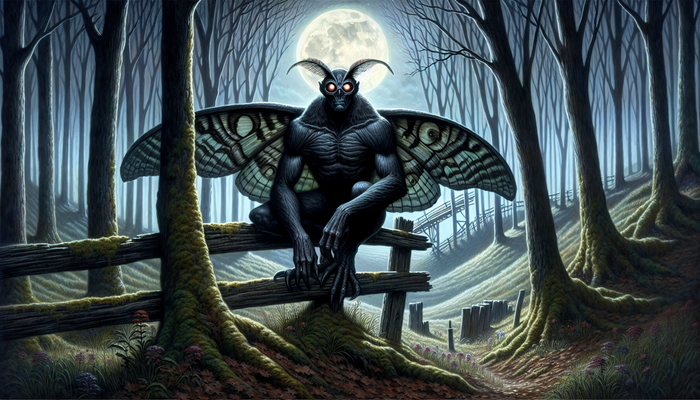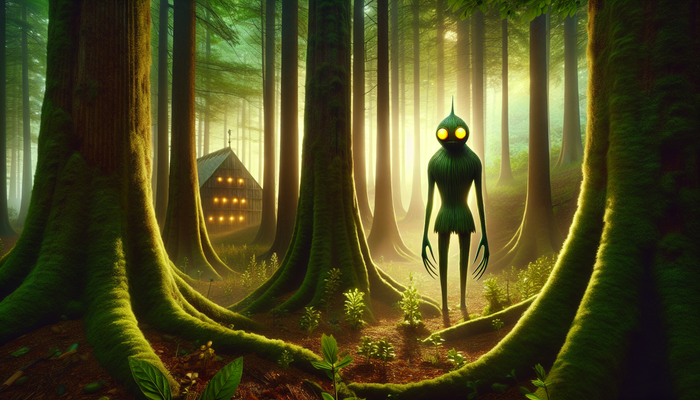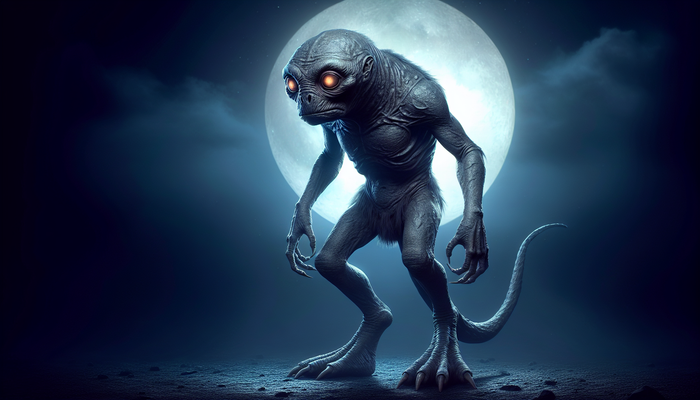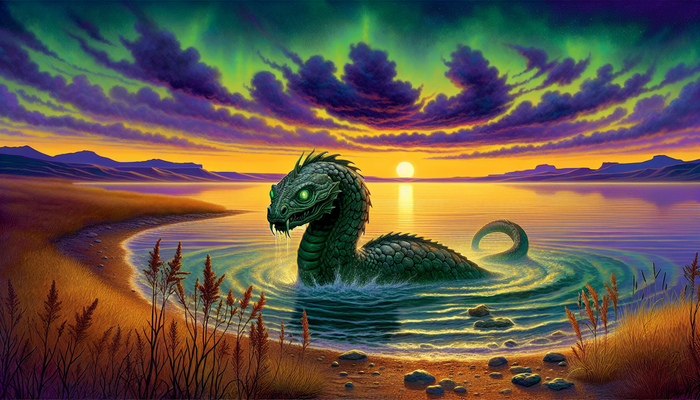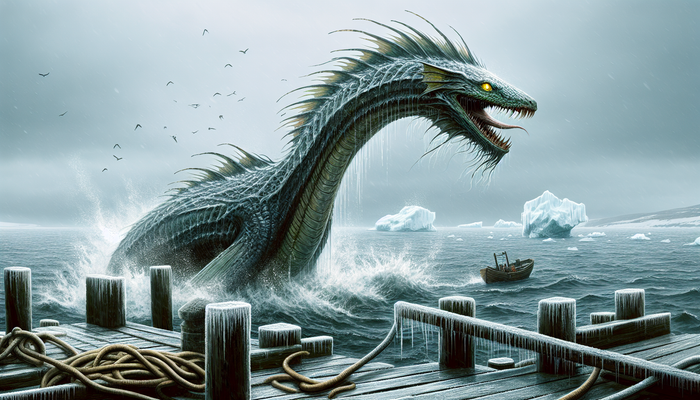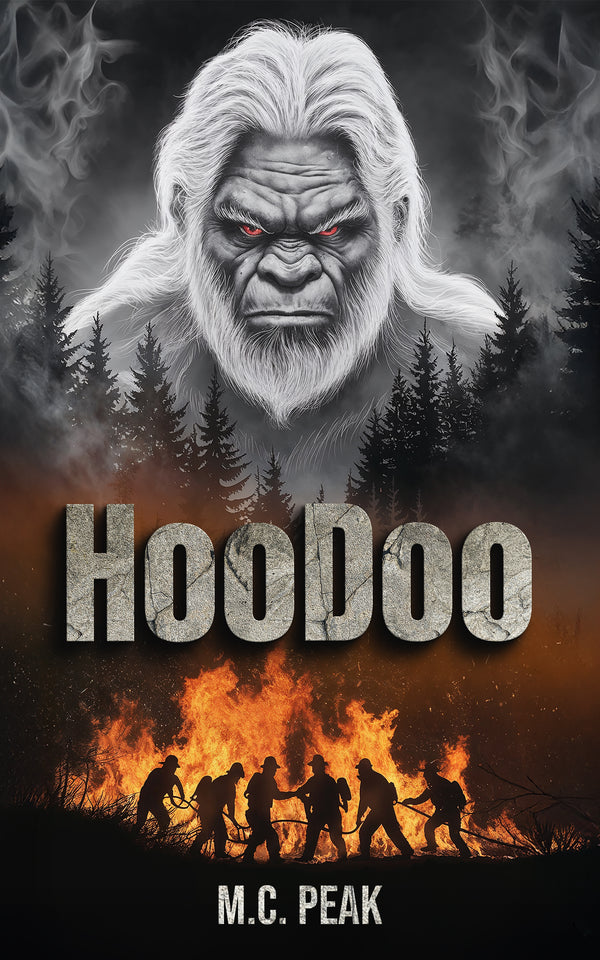Cryptids Lurking in Alaska's Untamed Wilderness
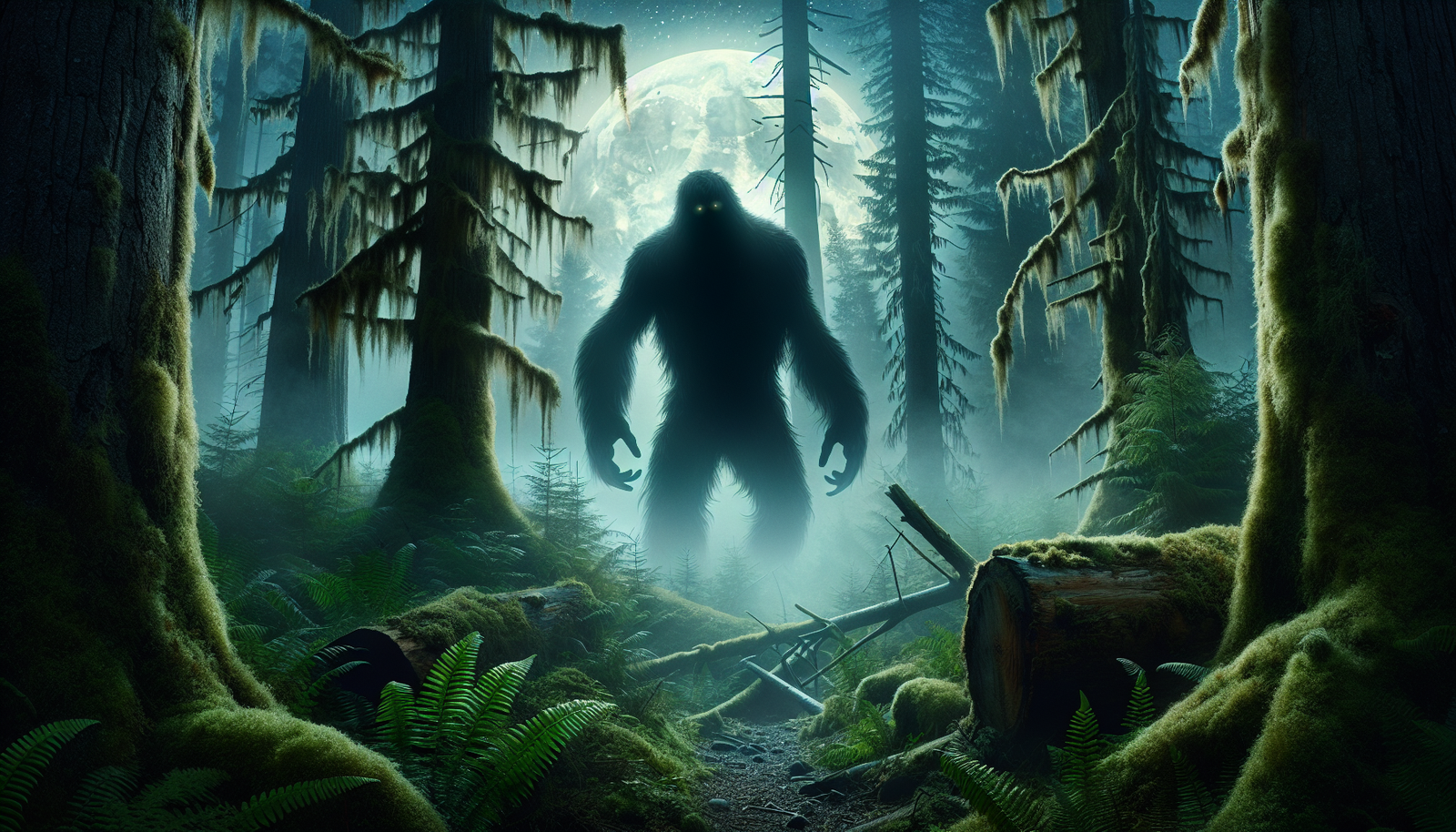
By Jack Sullivan, Bigfoot Researcher
As a lifelong Bigfoot enthusiast and researcher, I've always been drawn to the mysteries that lurk in the shadows of our world's most remote and rugged landscapes. And when it comes to untamed wilderness and cryptozoological intrigue, few places can rival the vast expanse of Alaska. This land of towering mountains, pristine forests, and icy waters has long been a hotbed for sightings of strange and elusive creatures, from the infamous Iliamna Lake Monster to the shape-shifting Kushtaka. Join me as we embark on a captivating journey into the heart of Alaska's cryptid lore, exploring the fascinating tales and tantalizing evidence surrounding these enigmatic beings.
The Iliamna Lake Monster: Alaska's Elusive "Illie"
Deep in the heart of southwest Alaska lies Lake Iliamna, the state's largest body of fresh water and home to a mystery that has captivated locals and researchers alike for decades. The Iliamna Lake Monster, affectionately known as "Illie," is said to be a massive aquatic creature, with eyewitness accounts describing it as anywhere from 10 to 30 feet in length. Some reports suggest that Illie has a head resembling that of a wolf or a whale, while others claim it possesses distinctly fish-like features such as gills and fins.
The first recorded sightings of Illie date back to the 1940s, when bush pilots began reporting glimpses of a large, unidentified animal moving beneath the surface of the lake. Over the years, numerous eyewitness accounts have added to the intrigue surrounding this elusive creature. In 2017, locals claimed to have seen a 50-60 foot long beast accompanied by smaller creatures, blowing water from its back in a manner reminiscent of a whale.
Theories abound as to the true nature of Illie. Some speculate that the creature could be a relic population of plesiosaurs, marine reptiles thought to have gone extinct millions of years ago. Others propose that Illie might be an unknown species of freshwater eel or sturgeon, uniquely adapted to the depths of Lake Iliamna. Skeptics, however, suggest that sightings could be attributed to misidentifications of more mundane animals, such as seals, sturgeons, or schools of fish.
Despite several attempts to uncover the truth behind Illie, including a 1960s expedition led by American adventurer Tom Slick, concrete evidence of the creature's existence remains elusive. Sonar readings and eyewitness reports provide tantalizing clues, but the mystery of the Iliamna Lake Monster endures, beckoning to those with a thirst for the unknown.
The Kushtaka: Shape-Shifting Tricksters of Tlingit and Tsimshian Lore
In the rich tapestry of Alaskan folklore, few creatures are as intriguing and unsettling as the Kushtaka. These shape-shifting entities, whose name translates to "land otter man," are deeply rooted in the traditions of the Tlingit and Tsimshian peoples of southeast Alaska.
According to legend, the Kushtaka possess the uncanny ability to transform between human and otter forms, using this power to interact with and often deceive unsuspecting individuals. They are said to mimic human cries, such as the wailing of an infant or the screams of a woman in distress, to lure their victims into treacherous situations.
Interestingly, the Kushtaka is not always portrayed as a malevolent force. In some tales, these shape-shifters are depicted as benevolent guides, aiding lost or stranded individuals in finding their way back to safety. However, the vast majority of Kushtaka stories paint a far more sinister picture, with the creatures using their powers of deception to drag hapless victims to a watery grave.
The legend of the Kushtaka is not unique to the Tlingit and Tsimshian peoples. Similar tales of otter-like shape-shifters can be found in the folklore of other Alaskan Native groups, such as the Urayuli of the Yup'ik people. These parallels suggest a deeper cultural and psychological significance to the Kushtaka mythos, perhaps reflecting a shared fear of the unknown and the potential for deception lurking within the natural world.
As a researcher, I find myself drawn to the enigma of the Kushtaka. The duality of their nature, as both benevolent guides and malicious tricksters, speaks to the complex relationship between humans and the wilderness we inhabit. Whether rooted in ancient wisdom or born from the depths of our collective imagination, the Kushtaka remains a potent symbol of the untamed and unpredictable forces that shape the Alaskan landscape.
The Thunderbird: A Colossal Avian Cryptid
Soaring high above the rugged peaks and vast expanses of Alaska, the Thunderbird has long been a fixture in the mythology of the region's indigenous peoples. This colossal avian cryptid is said to possess a wingspan that rivals that of small aircraft, with the power to generate thunder and lightning as it takes to the skies.
In Tlingit folklore, the Thunderbird is revered as a mighty hunter, capable of snatching whales from the ocean's surface with its enormous talons. This awe-inspiring creature has been a subject of fascination and reverence for generations, with sightings reported by Alaskan Natives throughout history.
One of the most intriguing Thunderbird accounts in recent years comes from a 2002 sighting by an Alaskan pilot. The witness claimed to have seen a bird with a wingspan of approximately 14 feet flying alongside their aircraft, a description that fits the legendary proportions of the Thunderbird.
Cryptozoologists have long speculated about the possible origins of the Thunderbird. Some suggest that the creature could be a surviving remnant of prehistoric flying reptiles, such as pterosaurs or teratorns, which are thought to have gone extinct millions of years ago. Others propose that Thunderbird sightings might be attributed to misidentifications of large, known bird species, such as eagles or condors, seen under unusual lighting conditions that exaggerate their size.
Regardless of its biological reality, the Thunderbird remains an iconic figure in Alaskan Native art and culture. Its image adorns totem poles, masks, and other traditional crafts, serving as a powerful symbol of the untamed forces of nature and the mysteries that still lurk in the skies above the Last Frontier.
As someone who has dedicated much of my life to the study of cryptids and the mysteries of the natural world, I can't help but be drawn to the legend of the Thunderbird. The idea that such a magnificent creature could have eluded scientific classification for so long is both thrilling and humbling, reminding us of the vast unknowns that still exist in the world around us.
Bigfoot of the North: The Alaskan Bushman
No discussion of Alaskan cryptids would be complete without mentioning the region's very own Bigfoot-like creature, known by various names such as Arulataq, Miluquyuli, or most commonly, the Alaskan Bushman or Tornit.
In the folklore of the Inuit and other Alaskan Native peoples, the Bushman is described as a giant, hairy, human-like creature that roams the remote wilderness. These beings were once said to have had friendly interactions with humans, but in modern times, they are believed to actively avoid contact with civilization.
The Bushman is often portrayed as possessing immense strength and size, capable of uprooting trees and hurling them like twigs. Some stories depict the creature as a gentle giant, while others paint a more fearsome picture of an aggressive, territorial beast.
Over the years, there have been numerous sightings and alleged evidence of the Alaskan Bushman's existence. Eyewitness accounts from hunters, hikers, and locals describe encounters with large, hairy, bipedal creatures in the state's remote forests. Footprint casts, blurry photographs, and even alleged hair samples have been put forth as proof of the Bushman's presence, though definitive evidence remains elusive.
As a Bigfoot researcher, I find the concept of an undiscovered primate species inhabiting the vast, untamed wilderness of Alaska to be entirely plausible. With so much of the state's interior remaining largely unexplored and inaccessible, it's not difficult to imagine a creature like the Bushman evading detection for centuries.
The parallels between the Alaskan Bushman and Bigfoot sightings in other parts of North America are also striking. The consistent descriptions of a large, hairy, bipedal creature across vast distances and diverse cultures suggest that there may be more to these legends than mere folklore or misidentification.
While I have yet to personally encounter the Alaskan Bushman in my own research, the stories and evidence surrounding this enigmatic creature continue to fuel my passion for cryptozoology. The possibility of one day coming face-to-face with this elusive being in the remote wilds of Alaska is a tantalizing prospect that keeps me venturing into the unknown, always searching for answers.
A Menagerie of Alaskan Cryptids
Beyond the Iliamna Lake Monster, the Kushtaka, the Thunderbird, and the Alaskan Bushman, the Last Frontier is home to a veritable menagerie of lesser-known but equally fascinating cryptids. These creatures, drawn from the rich tapestry of Alaskan Native folklore, add to the state's reputation as a hotbed of cryptozoological intrigue.
The Tizheruk
One such creature is the Tizheruk, a fearsome sea serpent said to inhabit the waters off the Alaskan coast. Described as having a wolf-like head and a long, sinuous body, the Tizheruk is believed to be capable of snatching unsuspecting victims from docks and piers without so much as a splash. Tales of this enigmatic creature have been passed down through generations of Alaskan Natives, serving as a warning to those who venture too close to the water's edge.
The Adlet
Another intriguing Alaskan cryptid is the Adlet, a werewolf-like being that features prominently in Inuit mythology. According to legend, the Adlet are the offspring of a human woman and a giant dog, resulting in a race of creatures with the lower body of a canine and the upper body of a man. The parallels between the Adlet and werewolf legends from other parts of the world are striking, hinting at a deeper, perhaps universal fear of the beast within.
The Keelut
The Keelut, a hairless, black canine spirit, is another creature that looms large in Inuit folklore. Said to stalk the tundra at night, the Keelut is believed to be an evil entity capable of luring unwary travelers to their doom. The Keelut's lack of hair, save for small tufts on its feet that allow it to move silently across the snow, only adds to its sinister reputation.
The Qalupalik
In the waters off the Alaskan coast, the Qalupalik is said to lurk, waiting to snatch children who wander too close to the shore. This aquatic, humanoid creature is often described as having long, stringy hair and a greenish tinge to its skin. The legend of the Qalupalik serves as a cautionary tale, warning young ones to obey their elders and stay safe.
The Waheela
Finally, there is the Waheela, a mysterious wolf-bear hybrid that has been reported in the remote regions of Alaska. With its large size, shaggy fur, and elongated front limbs, the Waheela is a creature that defies easy classification. Some researchers have suggested that the Waheela may be a surviving remnant of the prehistoric bear-dog, Amphicyon, though evidence for this theory remains scarce.
As a cryptozoologist, I find myself endlessly fascinated by the sheer diversity of cryptids that call Alaska home. Each of these creatures, from the Tizheruk to the Waheela, represents a piece of the larger puzzle that is the state's rich tapestry of folklore and mythology. By studying these legends and the eyewitness accounts that accompany them, we can gain a deeper understanding of not only the creatures themselves but also the cultures that have given rise to their stories.
The Alaskan Cryptid Phenomenon: Theories and Explanations
The sheer number and variety of cryptid sightings in Alaska beg the question: what is it about this state that seems to attract so much cryptozoological activity? As a researcher, I believe that the answer lies in a combination of factors, from Alaska's unique geography and environment to the rich cultural traditions of its indigenous peoples.
One of the most obvious explanations for Alaska's cryptid phenomenon is the state's vast, untamed wilderness. With millions of acres of remote, largely unexplored terrain, Alaska provides ample opportunity for unknown creatures to evade detection. The state's rugged mountains, dense forests, and sprawling tundra create a patchwork of habitats that could easily conceal a wide variety of cryptids, from Bigfoot-like creatures to giant birds and aquatic monsters.
Alaska's harsh and unpredictable weather conditions also play a role in its cryptozoological allure. The state's long, dark winters, punctuated by brief periods of intense summer sunlight, create an environment that is both challenging and mysterious. In such conditions, it's not difficult to imagine strange, adapted creatures thriving in the shadows, just beyond the reach of human understanding.
Another key factor in Alaska's cryptid phenomenon is the rich cultural heritage of its indigenous peoples. For thousands of years, Alaskan Natives have passed down stories of strange and wondrous creatures through oral tradition. These tales, often serving as cautionary fables or explanations for natural phenomena, have become deeply ingrained in the fabric of Alaskan folklore.
In many cases, cryptid stories may have served as a means of preserving cultural identity and imparting important survival lessons to younger generations. By weaving tales of shape-shifting creatures, giant birds, and hairy, human-like beasts into their mythology, Alaskan Natives were able to convey the importance of respecting the natural world and the potential dangers that lurked within it.
One of the most intriguing aspects of Alaska's cryptid lore is the so-called "Alaska Triangle," a region of the state that has gained notoriety for its high number of unexplained disappearances. Stretching between the cities of Anchorage, Juneau, and Barrow, this area has been the site of countless vanishings over the years, with some estimates suggesting that the rate of missing persons cases in the Alaska Triangle is twice the national average.
While skeptics point to the region's treacherous terrain and unpredictable weather as the likely culprits behind these disappearances, some cryptozoologists have suggested that the Alaska Triangle's high concentration of cryptid sightings may be connected to its missing persons cases. Could it be that creatures like the Kushtaka or the Alaskan Bushman are responsible for at least some of these vanishings? It's a tantalizing theory, though one that remains largely speculative.
From Bigfoot to UFOs: Hangar 1 Publishing Has You Covered!
Explore Untold Stories: Venture into the world of UFOs, cryptids, Bigfoot, and beyond. Every story is a journey into the extraordinary.
Immersive Book Technology: Experience real videos, sights, and sounds within our books. Its not just reading; its an adventure.



